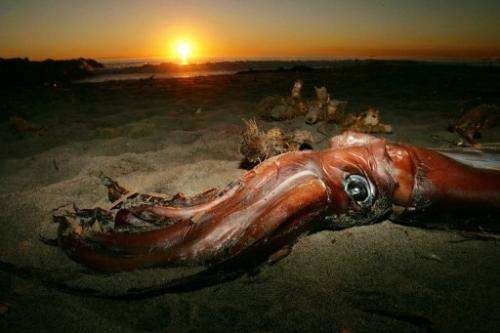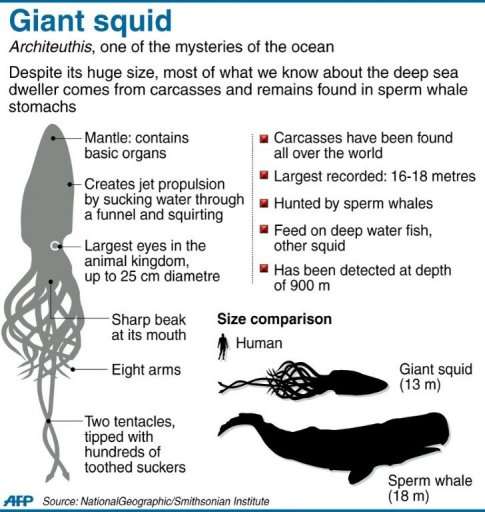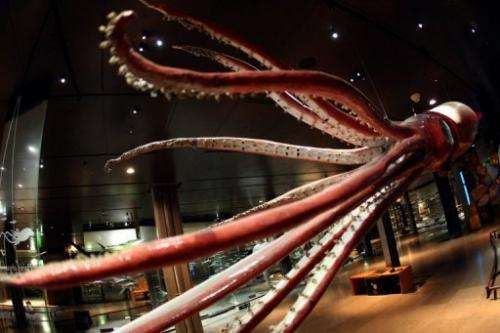Scientists peek into giant squid's gene pool

Scientists announced they had peeked into the DNA of the giant squid, seeking to demystify a deep-sea creature that has haunted sailors' dreams for centuries.
But their findings, published Wednesday, threw up some tantalising questions in turn.
They include the likelihood that there is just one species of giant squid, and not a constellation of species as some experts have thought.
And, far from being a rarity, the giant squid could inhabit the deep ocean in large numbers, its pre-larval offspring riding warm currents to disperse globally, the exception being the polar regions.
Evidence "strongly suggests that the family Architeuthis consists of a single species of giant squid, namely Architeuthis dux," the biologists reported in the British journal Proceedings of the Royal Society B.
"If so, this species is cosmopolitan and likely has a substantial population size."
As long as a bus, with beachball-sized eyes that help it spot prey in the dark, the giant squid is one of the largest invertebrates, or animals with no backbone.
The beast has been detected at depths of 900 metres (2,900 feet), proof of an ability to thrive at pressures that would crush a navy submarine.
The elusive squid was first observed in its natural habitat just nine years ago.

Until then, its existence was inferred from remains found in sperm whales' stomachs, carcasses found floating on the ocean or washed up on beaches or from rare individuals snared by deep-sea trawlers.
The tentacled giant's taxonomy has long been in dispute.
As many as 21 nominal species have been reported since a Danish biologist, Japetus Steenstrup, described Architeuthis dux in 1857.
The claims were often based exclusively on where they were found or on incomplete remains such as beaks, suckers or arms regurgitated by sperm whales.
For this study, researchers examined mitochondrial DNA—a genetic marker handed down along the maternal line—from 43 giant squid taken in waters from Australia, Spain, Florida, New Zealand and Japan.
They were astonished to find that there was only a tiny diversity in the DNA signature.
"The data strongly suggest that globally only a single species of Architeuthis exists," says the study.

It suggests that giant squid are "highly migratory," with offspring dispersed on global currents called thermohalines.
The species may well have experienced a population surge, perhaps due to a rapid decline in the number of predator whales due to overfishing or climate change.
Legends about the squid include the Kraken, a ship-sinking leviathan that first featured in Scandinavian legends centuries ago.
A giant squid also featured in Jules Verne's 1870 novel Twenty Thousand Leagues Under the Sea, in which it attacks a submarine and devours a crew member.
But fact is often confused with fiction, say the authors of the study.
"[W]hile claims have been made of individuals measuring up to 50 metres (164 feet) in total length, a more realistic estimate is a maximum total length of 18m (59 feet) for females, with males reaching slightly smaller sizes."
Many things about the squid remain to be elucidated, including how long it lives and how it is able to catch its prey—fish but also smaller squid, including its own kind—at depths where light barely penetrates.
Some scientists have concluded Architeuthis must be a sluggish, ambush predator while others believe it is an active, powerful hunter.
More information: Paper: rspb.royalsocietypublishing.or … .1098/rspb.2013.0273
Journal information: Proceedings of the Royal Society B
(c) 2013 AFP



















